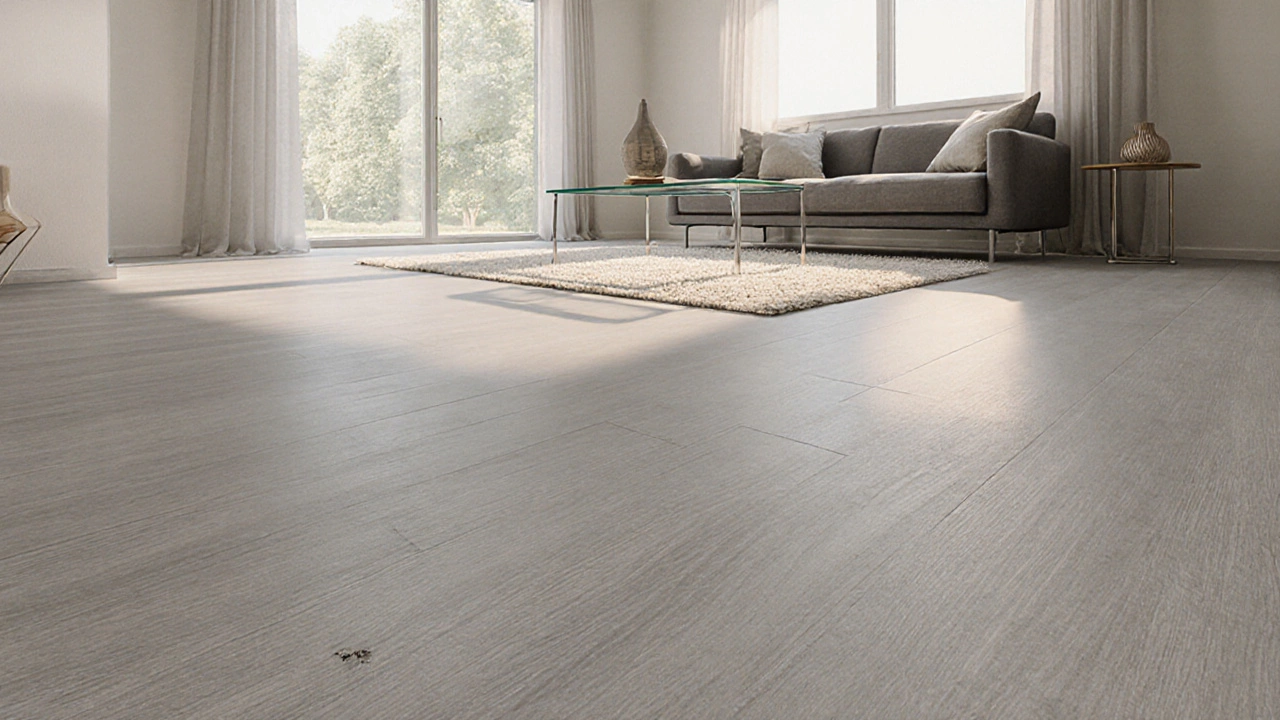Learn which floor colors look the cleanest, why they work, and how to choose and maintain the perfect shade for any room.
Best Floor Color Ideas for Every Home
Picking a floor colour feels like a big decision, but it doesn’t have to be stressful. The right shade can make a room feel larger, cozier, or more modern in minutes. Below you’ll find straight‑forward advice that helps you match colour to light, size, and the vibe you’re after.
How Light and Space Influence Your Choice
Bright rooms love light tones. If a space gets plenty of natural light, a pale beige, soft grey, or even a subtle white tile can keep the room feeling airy. Darker floors work best in rooms with limited sunlight because they add depth without making the space look flat. Test a sample board on the wall and watch it change from morning to evening – that’s the easiest way to see how the colour reacts to your home’s light.
Match Colour to Style, Not the Other Way Around
Modern interiors often stick to cool greys or charcoal. If you’re leaning toward a contemporary look, choose a floor that mirrors those shades. For a classic or farmhouse feel, warm oak tones or honey‑colored tiles bring the right amount of comfort. And if you love a bit of drama, a deep navy or black floor can become the statement piece you need—just pair it with lighter furniture to keep the room balanced.
Another simple rule: keep the floor colour neutral if you plan to change furniture often. Neutral floors act as a canvas, making it easy to refresh the room with new cushions, rugs, or art without clashing.
Don’t forget about undertones. A grey tile can have blue, green, or warm brown hints. Look at the undertone under different lighting to ensure it blends with your wall paint and décor. Matching undertones prevents the space from feeling disjointed.
If you have a small room, go for a colour that reflects light. Light wood or pastel tiles bounce light around, creating an illusion of extra space. In larger rooms, you can afford richer colours because there’s plenty of surface to absorb the hue without overwhelming the eye.
Rugs are a great way to add colour without committing to the whole floor. Use a neutral floor and layer a patterned rug for visual interest. This trick works well in living rooms where you want a pop of colour but still need the floor to stay practical for foot traffic.
When you’re working with tiles, consider texture as well as colour. A matte finish hides scratches better than a high‑gloss surface. For high‑traffic areas like kitchens, a slightly textured tile offers grip and masks wear.
Budget can shape your decision too. Solid wood can be pricey, while high‑quality porcelain that mimics wood provides a similar look for less cost. Look for warranties and durability ratings; a floor that lasts longer saves money in the long run.
Finally, trust your gut. Walk over a few sample boards in the store, imagine where you’ll place your sofa or dining table, and pick the shade that feels right. If it makes you smile, you’ve probably found the perfect floor colour.
With these easy guidelines, you can choose a floor colour that enhances light, fits your style, and works for your budget—all without the guesswork. Happy flooring!
